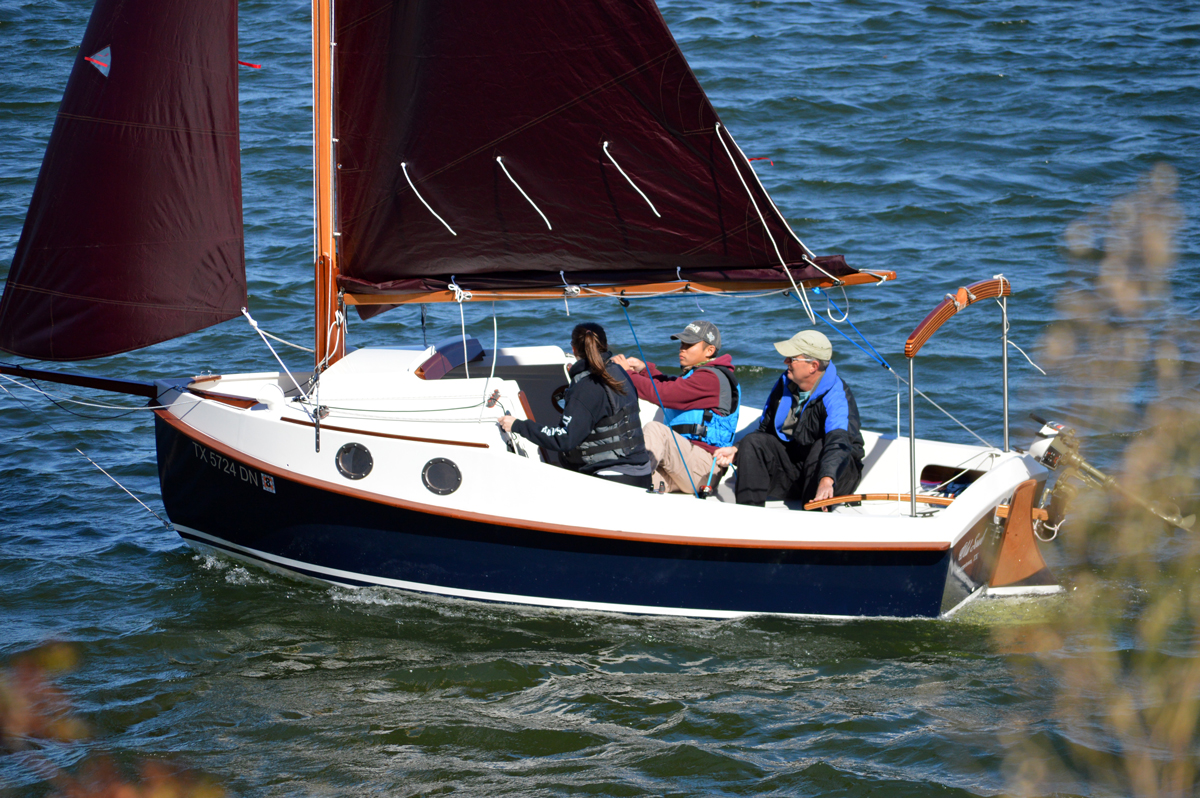 |
| Gluing Port Side of Keel to Centerboard Trunk |
A fair amount of work was accomplished over the weekend. The port side of the keel was glued to the centerboard (CB) trunk, as shown here. The port keel side is on the bottom. You can barely see 1" thick blocks that are there to keep the CB trunk from being squeezed in by the clamps.
 |
| Aft Section: Gluing Starboard Side of Keel to Trunk |
I replaced the thermometer later with a $10 digital thermometer/hygrometer that I hope will be more accurate. And it keeps a record of 24-hour lows and highs. That will be useful.
Next, the starboard keel side is glued to the trunk. Shown here is
the rear section, from the trunk to the aft end of the keel. Full paint
cans make useful weights for gluing. You can't see it but there is a
thin piece of wood under the aft end of the keel to keep it from being
bent out of shape--it tapers, remember?
 |
| Forward Section: Gluing Starboard Side of Keel to Trunk |
 |
| Gluing Port Side of Keel to CB Trunk |
A couple more pictures from different angles.
 |
| Assembled Keel/CB Trunk |
The assembled keel. There a few more things that were done after this picture. Some filling and sanding, and I used a router to round over the front edges of the trunk (which will be inside the cuddy) and the bottom edges of the keel.
The keel is ready for the lead pour now. I am having a lot of trouble finding lead. It was supposed to be easy to get from tire shops (used balancing weights), but that is turning out to not be so. I have one more store I am going to try. I am also in contact with the local scrap yard, where they keep saying they will get back to me, but then never do. Lead shot is also an option, but it is expensive and I'll have to pay a lot for shipping. The problem with lead shot is that it contains about 5% antimony, so I'll be paying extra for metal I don't want and that will take up more volume. So, I'll keep up the search. I hope to have the lead in time to do the pours this coming weekend.






I didn't have a lot of luck with the weights, either. I found enough for the initial lead pour at a small, private shop in an interesting area of town. These smaller shops will be your best bet. Just be prepared to sift through the waste. I've got another 100 lbs I need to source.... so I'm in the same boat, so to speak!
ReplyDeleteThanks. I finally gave up on the local place, “American Scrap,” calling me back. I drove down there instead and it turned out they had a pile of about 200 lb lying there. I bought 110 pounds for the keel—that should cover the weight lost from other metals I’ll have to spoon out—there were only 10 or 12 tire weights in the pile. (Actually I ended up with 112 pounds, the lady threw in a couple extra.) Also, it was 60 cents a pound—much cheaper than I have found anywhere else. The days of free balancing weights at tire shops are over.
ReplyDeleteYou are right about hunting around for local shops. At least they had all the lead in one place though. I think that once I smelt out all the impurities I will end up with purer lead than you get with lead shot—no antimony. Anyway that’s my hope.
If this works out, I have some small ingot molds. I think I’ll mold my own ingots to use under the floorboards instead of lead shot.
I got most of my lead (some free, some for about $0.50/lb) from Mexican tire shops here in Phoenix. I went the lazy route and threw everything in the smelter. Once the flames burned themselves out (about 5 minutes), I scooped out the "non-lead" with a strainer spoon. I weighed the scrap after pouring the keel and it came in at 20-lbs! So, you can pick it out before or during - up to you. I had about 75-lbs of lead left-over and made ingots using a cast-iron loaf pan I bought for about $14 at Bed Bath & Beyond.
ReplyDelete